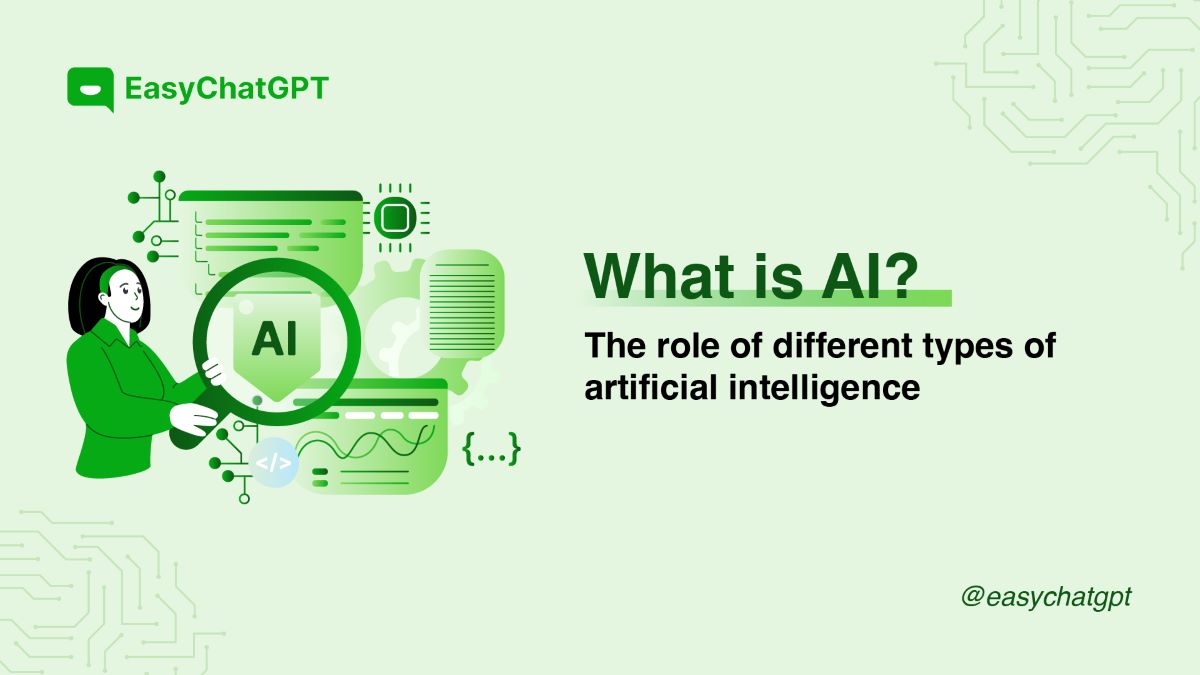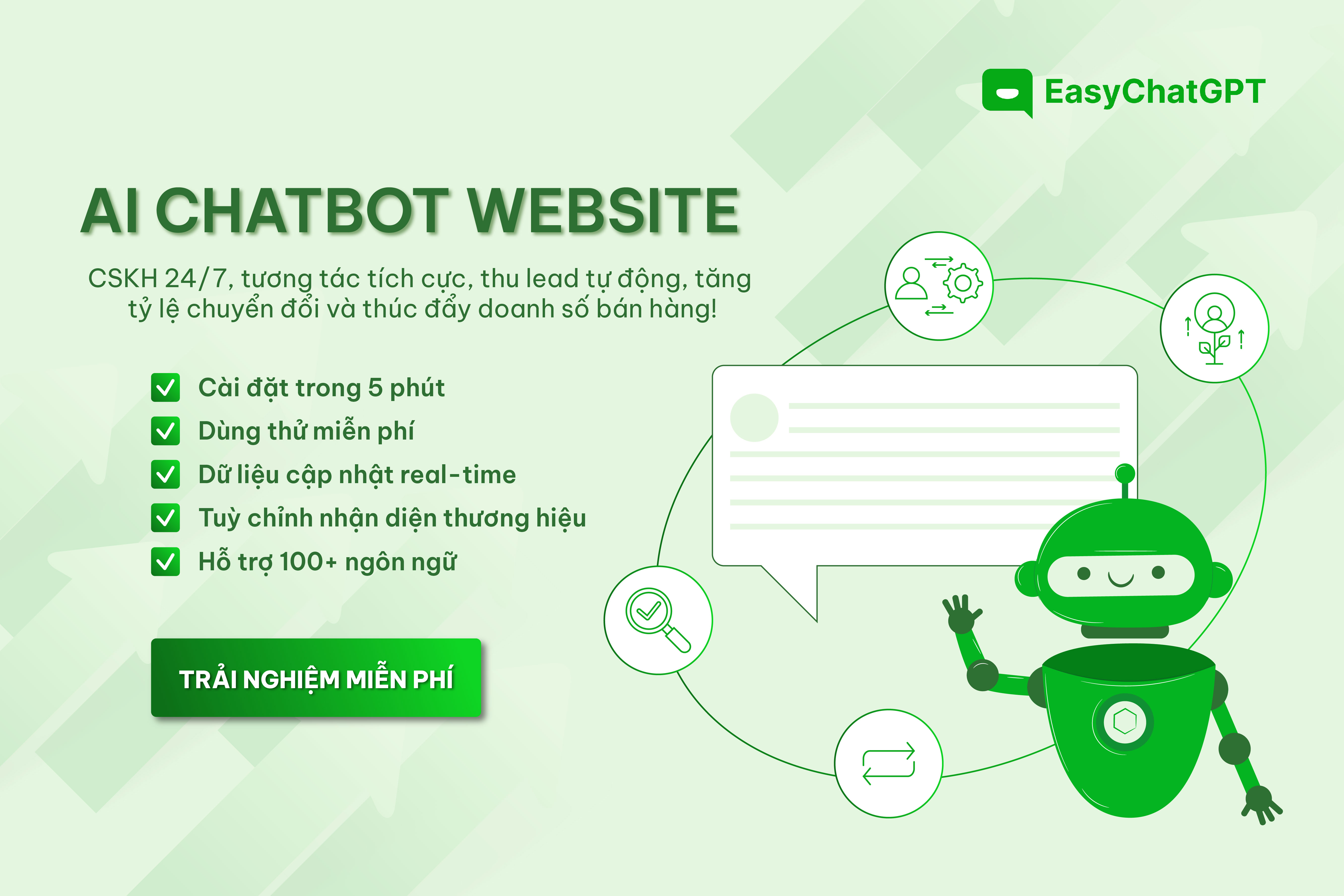What is AI? The role of different types of artificial intelligence in the era of industry 4.0

Artificial Intelligence (AI) has become integral to life and business operations. From assisting in processing massive amounts of data to automating complex processes, AI is driving the world into an unprecedented phase of innovation.
According to the report “The Economic Potential of Generative AI: The Next Productivity Frontier”, published by McKinsey in June 2023, AI technology can contribute between $2.6 trillion to $4.4 trillion annually to the global economy. So, what roles do various types of artificial intelligence play in the Fourth Industrial Revolution? EasyChatGPT will provide a clearer perspective on this issue in the article below.
1. What is Artificial Intelligence (AI)?
Artificial Intelligence (AI) refers to the ability of machines to simulate human thinking, learning, and information processing. This technological breakthrough brings numerous outstanding benefits to life and various industries.
Artificial Intelligence (AI) is a term that describes the ability of machines to simulate human processes of thinking, learning, and processing information
AI is built on advanced algorithms, enabling machines to learn from data and improve performance over time. Unlike traditional software that operates on fixed rules, AI can adapt and solve complex problems without human intervention. This makes AI a valuable tool across fields such as healthcare, finance, and e-commerce.
Additionally, AI comes with several related concepts:
- Machine Learning (ML): A branch of AI that focuses on using algorithms to enable machines to learn from data without specific programming.
- Deep Learning (DL): An advanced level of ML, employing artificial neural networks to process and analyze complex data, such as image and voice recognition.
2. Common types of AI today
Artificial intelligence is currently divided into three main types based on intelligence level and application capabilities. Each type of AI presents unique potentials and challenges in implementation.
2.1 Narrow AI
Narrow AI is designed to perform one or a few specific tasks. It is the most common type of AI today, appearing in familiar applications such as virtual assistants (Siri, Alexa), Netflix’s movie recommendation services, or automated chatbot systems in e-commerce.
The greatest advantage of Narrow AI is its specialization, allowing it to solve specific problems with high accuracy. However, its drawback is its inability to operate beyond the programmed scope of tasks.
2.2 General AI
General AI aims to replicate human intelligence on a broader scale. It can understand, learn, and apply knowledge across various fields. General AI possesses complete human cognition and can address a wide range of problems.
2.3 Super AI
Super AI is the highest level of artificial intelligence. This theoretical form of AI would surpass human intelligence in every domain. Currently, Super AI remains within the realm of science fiction.
Currently, Artificial Intelligence is divided into three main types based on its level of intelligence and applicability.
Read more: What Is a Chatbot? Why AI Chatbots Are the Optimal Choice for Businesses
3. The role of AI in the fourth industrial revolution
Amid the Fourth Industrial Revolution, artificial intelligence serves as the primary driving force behind changes across various sectors.
3.1 Driving economic growth
According to McKinsey’s June 2023 report, “The Economic Potential of Generative AI: The Next Productivity Frontier”, AI is a crucial tool for increasing productivity and reducing operational costs.
In manufacturing, the use of AI robots to automate processes not only improves efficiency but also significantly reduces downtime and production errors. Smart factories leveraging AI can optimize resources, monitor real-time production data, and make quick and accurate decisions.
3.2 Innovating technology
AI is also transforming the way humans create. Generative AI - a rapidly growing field - enables the automatic generation of new content, such as images, sounds, and text.
This not only fosters innovation in art and media but also holds great potential in education and research. For instance, tools like DALL-E and MidJourney have allowed many designers to explore entirely new creative methods.
3.3 Creating new careers
Alongside AI technology development, many new professions have emerged, such as AI specialists, data engineers, and algorithm analysts. AI not only replaces repetitive tasks but also helps traditional industries enhance their value by adopting advanced technologies.
Furthermore, AI accelerates digital transformation in fields such as healthcare (supporting disease diagnosis), finance (investment risk analysis), and education (personalized learning).
3.4 AI in daily life
- Chatbots and virtual assistants: AI has revolutionized how humans interact with machines. Platforms like ChatGPT provide quick, accurate answers to a wide range of issues.
- Self-driving cars and smart traffic: Technologies like Tesla’s self-driving vehicles are reshaping the global transportation industry.
- Data analysis and prediction: Thanks to AI, businesses can predict trends, optimize strategies, and boost revenue. Netflix, for instance, uses AI to personalize content recommendations for each user.
AI technology serves as the primary driver of change across various sectors in the Fourth Industrial Revolution.
4. Conclusion
The Fourth Industrial Revolution is progressing at an incredible pace, with artificial intelligence playing a pivotal role in driving economic growth and technological innovation. For businesses, adopting AI is the key to differentiation and maintaining competitive advantages in the market. Leverage the power of AI to make solid strides in your business development journey.




